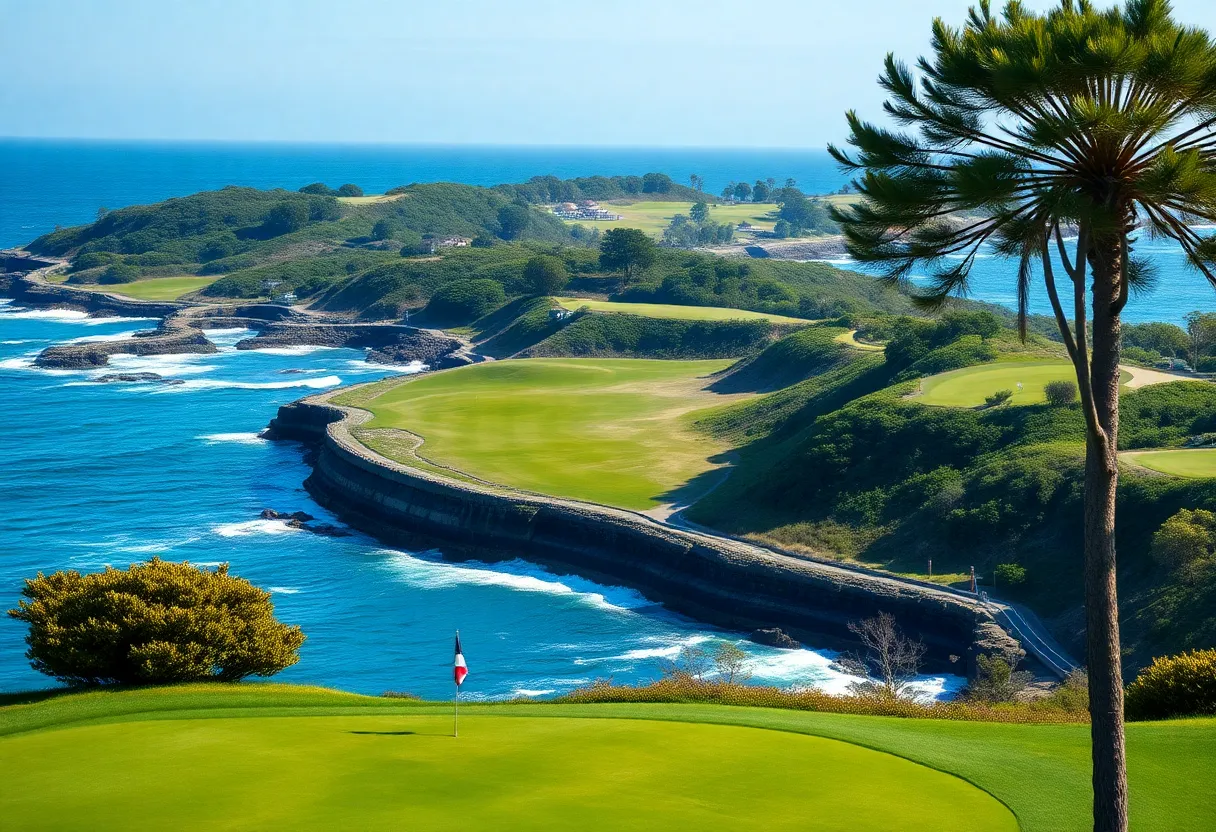,North Kingstown, August 29, 2025
News Summary
Rhode Island coastal regulators have rejected Quidnessett Country Club’s request to retroactively legalize a seawall built without approval in January 2023. The 6-0 vote emphasizes the need for shoreline stewardship and has raised concerns among environmental advocates about enforcement and future coastal management reforms. The seawall, intended to protect the golf course from rising tides, remains in place amid calls for clearer enforcement actions from the club and regulators.
North Kingstown — Golf course drama by the sea: regulators slam the brakes on an after-the-fact seawall
In a ruling that sounded the alarm for shoreline stewardship and club politics, Rhode Island coastal regulators delivered a clear decision: no to the Quidnessett Country Club’s bid to retroactively legalize a seawall built without permission in January 2023. The council voted 6-0, and the vote landed like a hook shot into the rough for the club.
The seawall, put in to shield fairways, greens and tees from creeping tides, sits along a 1,400-foot stretch of shoreline. The club argued that the work was a cleanup of a long-standing mistake and that reclassifying the adjacent waters would allow the structure to stay. Regulators, however, rejected the retroactive approval outright and didn’t open the floor to discussion on the club’s request to change the water’s classification.
What the council said — and didn’t say
The council declined to reclassify the shoreline waters from Type 1 — conservation area to Type 2 — low-intensity use. That distinction matters: the Type 1 label prohibits permanent structures in the protected waters, while Type 2 could permit them. The vote happened without public back-and-forth about the reclassification petition, even though opponents had packed the figurative gallery for months.
Public pushback and enforcement questions
Coastal access advocates, environmental groups and local residents pushed back hard against the reclassification plan. The chorus of opposition included groups focused on protecting public shoreline access and preserving habitat. One advocate pointed out that it has now been 519 days since the seawall was put up without permission and urged that enforcement follow the denial.
That demand for action highlights a sore spot: the club ignored initial warnings about building the seawall without authorization, and yet, as of the council vote, it has not been forced to remove the structure. The situation leaves a lot of uncertainty about next steps, with community members and coastal stewards calling for clearer and quicker enforcement.
How the club framed the move
From a golf-course-builder perspective, the club presented the seawall as a defensive measure — a practical effort to protect turf, sand traps and greens from rising waters and overtopping tides. The club’s legal team requested a chance to speak with the council before the vote, but the council denied that request because it had already held public meetings on the matter.
Bigger picture: state-level shakeup on the table
The decision has rippled beyond a single shoreline. The state’s top law officer highlighted the ruling as symptomatic of a larger need to reform how the coast is managed. A proposal has surfaced to dismantle the current council structure and replace it with a dedicated administrative department to manage coastal resources — an effort meant to streamline oversight and enforcement. Similar reform bills have appeared in the past but stalled before getting traction.
Why golfers should care
For players and course stewards, this story is more than local politics. Shoreline protection decisions affect course layout, long-term maintenance budgets and even tournament viability. A seawall can change how waves and currents interact with adjacent sand traps and may influence beach width, erosion patterns and turf moisture. When regulators, clubs and communities can’t agree, courses can end up in limbo — with parts of a property vulnerable while legal processes play out.
What happens next?
- Enforcement options remain unclear. The club still has the wall in place and no immediate removal order was issued at the time of the vote.
- State-level reform efforts are likely to be revived in legislative sessions, raising the prospect of new coastal management rules.
- Local advocates and officials will probably keep pressure on the club and the council to follow through with enforcement or negotiated mitigation.
For now, the wall sits, the vote stands, and golf fans watching the intersection of the sport and the sea should expect more headlines before this one is settled. Course superintendents, members and shoreline neighbors will all be keeping score.
FAQ — Quick answers for golfers and shoreline watchers
Q: What did the coastal council decide?
A: The council voted 6-0 to deny retroactive approval for the seawall the club built without permission.
Q: Why does the classification matter?
A: A Type 1 designation generally bans permanent structures in the waters, while Type 2 allows low-intensity uses and could permit certain structures.
Q: Is the wall gone?
A: No. The wall remains in place and additional enforcement action has not yet been announced.
Q: What are the next likely moves?
A: Possible enforcement by regulators, legal action, or legislative reforms to the coastal oversight body could follow.
Q: How does this affect play and course maintenance?
A: Shoreline hardening like seawalls can change erosion and sediment patterns, which may require adjustments to course maintenance and affect long-term course resilience.
Quick reference table
| Item | Detail |
|---|---|
| Council vote | 6-0 denial of retroactive approval |
| Seawall built | January 2023 (built without approval) |
| Shoreline section | Approximately 1,400 feet |
| Classification sought | From Type 1 (conservation) to Type 2 (low-intensity use) |
| Days since construction at time of vote | 519 days |
| Enforcement status | Seawall remains; future enforcement uncertain |
| State-level response | Proposal to reform coastal oversight structure and create a dedicated department |
Deeper Dive: News & Info About This Topic
HERE Resources
Coastal Controversy at Quidnessett Country Club Seawall
Evanston Golf Course Damaged by Stolen Golf Carts
Quidnessett Country Club Seawall Extension Granted Amid Protests
Boston Faces Rising Sea Level Threats by 2050
Additional Resources
- Rhode Island Current
- Market Data Forecast
- Providence Journal
- East Greenwich News
- National Day Calendar
- Wikipedia: Coastal Management
- Google Search: Rhode Island seawall regulations
- Google Scholar: Golf course environmental management
- Encyclopedia Britannica: Golf course
- Google News: Golf course seawall
Author: STAFF HERE BOSTON WRITER
The BOSTON STAFF WRITER represents the experienced team at HEREBoston.com, your go-to source for actionable local news and information in Boston, Suffolk County, and beyond. Specializing in "news you can use," we cover essential topics like product reviews for personal and business needs, local business directories, politics, real estate trends, neighborhood insights, and state news affecting the area—with deep expertise drawn from years of dedicated reporting and strong community input, including local press releases and business updates. We deliver top reporting on high-value events such as Boston Marathon, Head of the Charles Regatta, and Boston Harborfest. Our coverage extends to key organizations like the Greater Boston Chamber of Commerce and Associated Industries of Massachusetts, plus leading businesses in finance, biotech, and insurance that power the local economy such as Fidelity Investments, Biogen, and Liberty Mutual Insurance. As part of the broader HERE network, we provide comprehensive, credible insights into Massachusetts's dynamic landscape.





